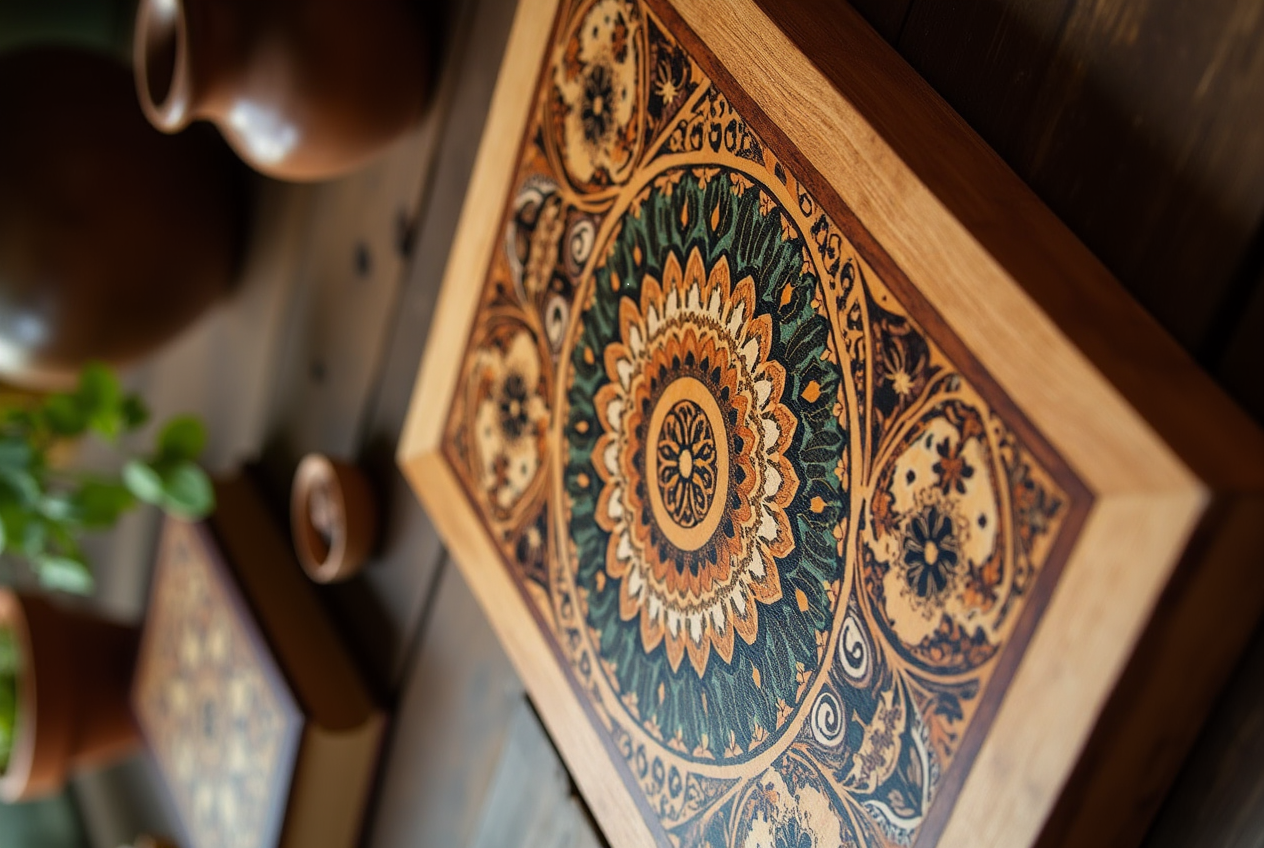History of wood mosaic art

Wood mosaic is one of the most delicate and beautiful branches of traditional Iranian arts, in which colorful wooden pieces are carefully placed together to create a complex and artistic image or motif. This art, which is a reflection of Iranian patience, precision, and taste, has traveled a steep path from the distant past to the present and today is a valuable heritage among applied arts.
/Origins and History
The art of mosaic has ancient roots and, in general, its history can be traced to two geographies:
Eastern civilizations such as India and China, where decoration with various woods and delicate carvings was popular.
Islamic lands, especially Iran, which have brought mosaic to its artistic peak.
The first examples of mosaic in the Islamic world probably date back to the Abbasid period. But wood mosaic, in its classical form, began in Iran in the 8th century AH, when Iranian artists, inspired by the art of mosaic tiles, began creating images with wooden pieces.
/The peak of prosperity in Iran
The Timurid period, and especially the Safavid period, was the golden age of wood mosaic art in Iran. During this period, Iranian artists in cities such as Isfahan, Yazd, Kashan, and Shiraz created exquisite works of art from doors, Quran scrolls, tomb chests, pulpits, and even decorative furniture. Mosaic artists used a variety of colored woods such as walnut, boxwood, betel, jujube, orange, ebony, and sandalwood, and with the help of simple tools, they put the pieces together with remarkable precision.
/The difference between mosaic and woodcarving
Many audiences confuse wood mosaic with woodcarving. But the fundamental difference between these two arts is that:
In woodcarving, the artist creates a design on the surface of the wood with a carving tool (wood carving).In mosaic, the artist cuts different pieces of wood and glues them together to create the final image (visual mosaic).
/Evolution in tools and techniques
In the past, mosaic tools were limited to a jigsaw, awl, hammer, and animal glue. However, in modern times, with the introduction of laser cutting machines, more precise tools have entered this art. However, handmade works still have greater artistic and material value, because the artist’s spirit and personal elegance are palpable in them.
/The place of mosaic in the modern era
In the last century, wood mosaic has flourished again with renewed attention to traditional arts and the promotion of handicrafts. Today, contemporary artists use not only wood, but also other materials such as metal, shell, bone, ivory, and even fabric in mosaics. Also, this art has moved from religious and traditional forms to new areas such as interior decoration, art paintings, furniture, and jewelry
/Education and Knowledge Transfer
In recent years, teaching the art of wood mosaic has become popular in art schools, technical and vocational centers, and independent art workshops in Iran. However, transmitting the original spirit of this art requires a relationship between master and student and long-term repetition in traditional workshops.
/Conclusion
Wood mosaic is an art that stands on the border between function and beauty, history and innovation. This art, with its wordless language, tells a combination of nature (wood), mathematics (symmetry), and Iranian culture. Preservation, education, and adaptation of this art to today’s needs can guarantee its continuity and prosperity in the future.